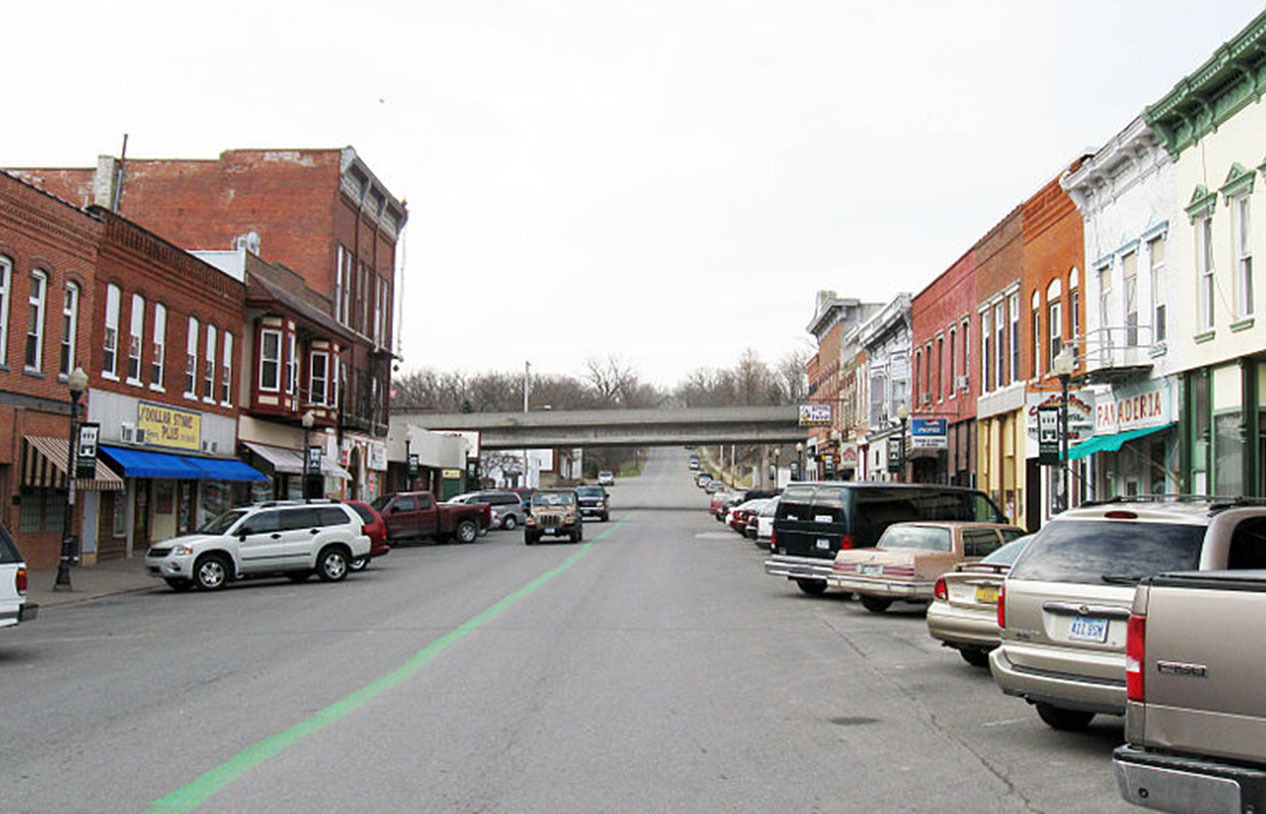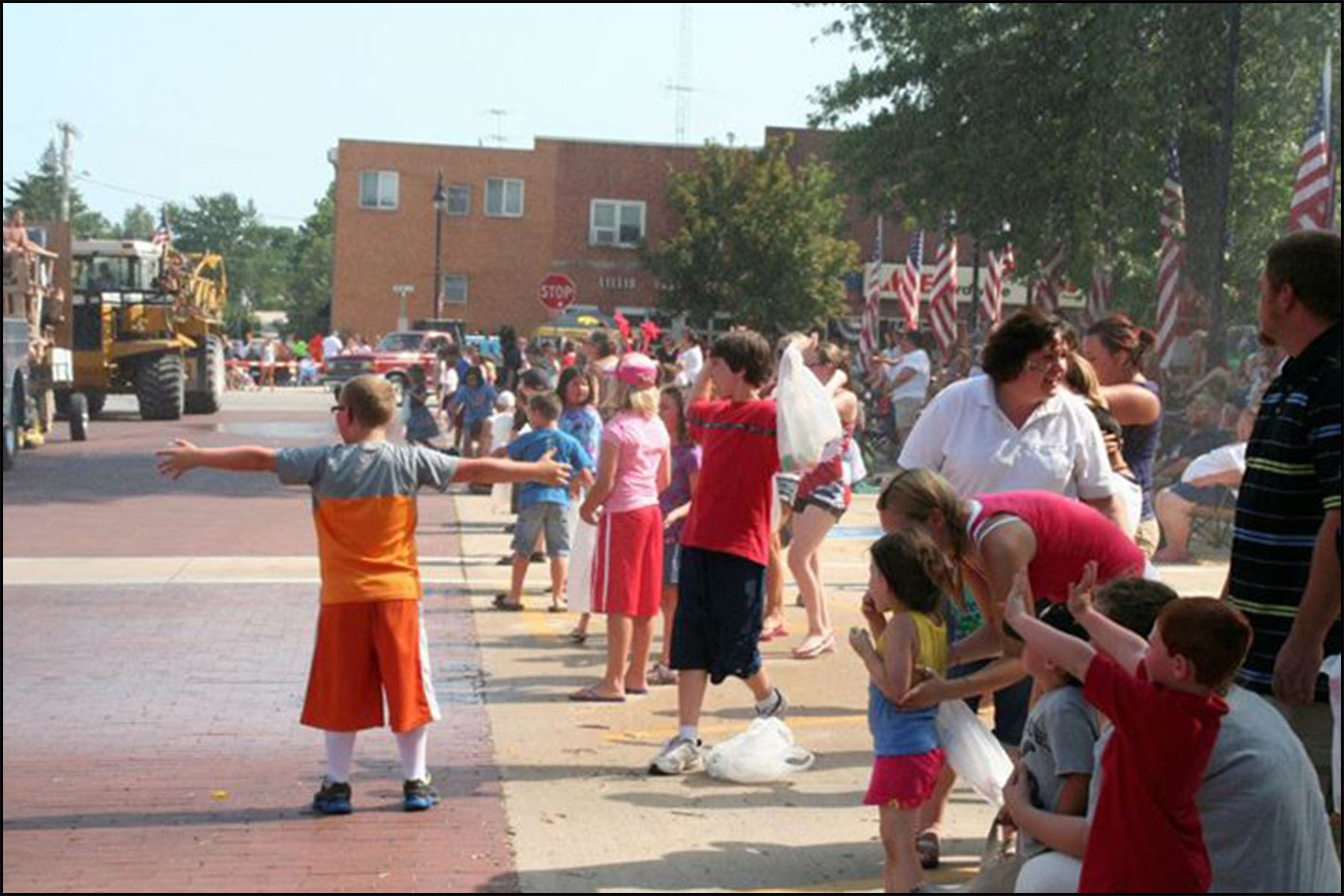
Iowa State researchers are encouraged by the positive ratings of government services in small town Iowa. Photos courtesy Department of Sociology
AMES, Iowa – A new survey of residents in 99 Iowa towns offers a snapshot of how these communities have changed over the past 20 years. While a majority of residents describe their community as safe and friendly, Iowa State University researchers found attitudes about certain amenities and the level of community involvement have declined.
Since 1994, the ISU research team has conducted a survey every 10 years to examine quality of life and social capital in the 99 towns, one in each county. Terry Besser, a professor of sociology and team lead for the project, is encouraged by the positive ratings for governmental services, including fire protection and emergency response service as well as parks and public schools.
Residents were less satisfied with non-governmental services, such as housing, child care and medical services. However, ratings for child care and medical services improved from 2004. Less than 30 percent of residents rated jobs and shopping as good or very good, but that was up from 15 to 16 percent in the previous survey.
“There is some optimism, some things have improved, some things have stayed the same, and those are very positive,” Besser said. “I want communities to see these positives, because if they don’t think their efforts result in any change that improves the community, then it’s pretty hard to sustain effort.”
The smaller the town, the bigger the challenge
In 1994, the towns selected for the survey ranged in size from 500 to 10,000 residents, but about half of those towns have lost population since then. It is important to note the assessment of the town services and attitudes toward community life are highly correlated with the size of the town’s population, Besser said. In general, residents in towns with fewer than 750 people rated government and non-government services as well as the social environment lower than residents in bigger towns.
“Being small makes it so difficult to pull things together. The same people are often called upon for community projects and there aren’t enough of them to carry the weight and accomplish what they want to get done – they just get exhausted,” Besser said.
Since the previous surveys in 1994 and 2004, Besser noted that several communities launched projects to improve child care services, programs for youth and small business development. Those efforts appear to have paid off and are reflected in the improved ratings for those services in individual communities, she said.
Community leaders now need to take a similar approach and focus their attention on residents’ involvement in the community and the sense of community, both of which have continued to decline since 1994, Besser added. Sense of community is the willingness of residents to put aside individual differences and work together to solve common problems.
In this latest survey, residents who had not participated in community projects in the past year said they didn’t know how to get involved, did not have sufficient time to get involved or simply were not asked to be a part of community projects. That’s changed from 2004 when lack of time to participate was the primary explanation.
Family roots are a strong pull
The main reasons people live in a particular small town have not changed since researchers conducted the first survey in 1994. The top two reasons are family ties and they grew up in town. Proximity to work is also important. Besser says those strong family and social ties are a strength and a challenge for many small towns in Iowa.

Family ties and growing up in town are two main reasons for living in a small town.
“It’s a strength because people have ties to the community, they know who they can trust and they can call on each other for help,” Besser said. “But it’s also a challenge because it makes new people feel like outsiders.”
This may explain why some residents said they were not invited to participate in community projects, Besser said.
Researchers also point to a decline in church attendance as another possible explanation for the changes in sense of community. Churches have generally ranked high as community gathering places and a source of community volunteers. The consolidation of some denominations of churches due to population decline has removed those institutions from small towns. Interestingly, convenience stores or gas stations rated high as popular place for people to meet up with others in the community.
Besser and colleagues Stephen Sapp, a professor of sociology; Deborah Tootle, an associate professor of sociology; and Georgeanne Artz, an assistant professor of economics; plan to build up on the survey results this summer and conduct an in-depth analysis of six communities. The researchers will look at development strategies, leadership structure and processes, and assess local amenities to evaluate the effectiveness of various kinds of strategies over the last 20 years.
The survey and the case studies were funded by a grant from the USDA National Institute for Food and Agriculture. The full report of the survey findings is available at: http://www.soc.iastate.edu/rdi/99communitystudy. The link also includes individual reports for all 99 communities.